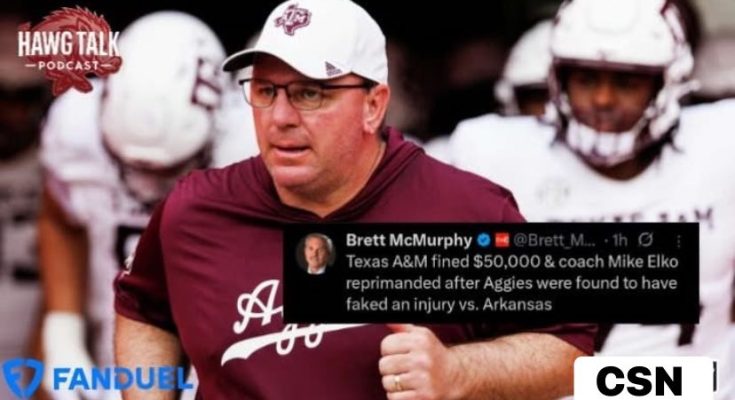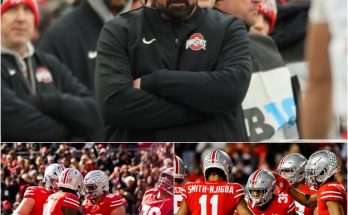Saturday will mark the 52nd all-time matchup between Texas Tech and Oklahoma State — a rivalry that has quietly evolved into one of the most balanced and unpredictable series in college football. Deadlocked at 24-24-3, this historic clash represents far more than just another Big 12 game; it’s a battle defined by decades of shifting momentum, fierce competition, and unforgettable moments that have shaped both programs’ identities. When the Red Raiders and the Cowboys meet on the gridiron, the script is never the same. Sometimes it’s a shootout under the bright lights of Lubbock, other times a defensive grind in Stillwater, but one thing has remained constant: this matchup always delivers drama, intensity, and passion.
The balance in this series is a rarity in college football. In an era where powerhouse programs often dominate rivalries for decades, Texas Tech and Oklahoma State have mirrored each other in progress, philosophy, and fight. Both schools share a similar ethos — built on the back of high-octane offenses, passionate fanbases, and an underdog mentality in a conference long ruled by giants like Oklahoma and Texas. Over time, each team has experienced stretches of dominance, with one gaining an edge only for the other to claw back years later, restoring equilibrium. This parity is not by accident; it’s the result of two programs that, regardless of ranking or roster, rise to the occasion when they meet.
The history of the series stretches back to 1935, when Texas Tech and Oklahoma State — then known as Oklahoma A&M — first crossed paths. It wasn’t yet a rivalry then, but the seeds were planted. The early years were marked by low-scoring, grind-it-out contests reflective of the football played in that era. Over time, however, as both programs grew and modernized, the style of play shifted dramatically, especially when the air raid offense made its way to Lubbock under the late Mike Leach. Suddenly, games between Tech and Oklahoma State became synonymous with fireworks — 50-point outbursts, record-breaking yardage totals, and quarterbacks who seemed to play like they were in video games.
The 2000s, in particular, turned this matchup into must-watch television. When Mike Leach’s Red Raiders squared off against Mike Gundy’s rising Cowboys, fans were treated to a showcase of offensive innovation and sheer competitiveness. Both coaches were disciples of modern football — obsessed with spacing, tempo, and maximizing their quarterbacks’ talents. It was during this period that players like Graham Harrell, Michael Crabtree, Brandon Weeden, and Justin Blackmon carved their names into the rivalry’s lore. Some games turned into shootouts decided by a single possession, others by a single mistake. But regardless of the outcome, both programs pushed each other to evolve, sharpen, and redefine what it meant to compete in the Big 12.
For Texas Tech, this game has often served as a barometer for the program’s progress. Win, and it’s validation that the Red Raiders are on the right path. Lose, and it’s a reminder of how narrow the margin for error can be in a conference filled with offensive juggernauts. Oklahoma State, on the other hand, has often viewed the matchup as a test of consistency — a chance to assert itself as one of the Big 12’s most reliable programs. Under Mike Gundy, the Cowboys have built a reputation for discipline, balance, and physicality, blending explosive offensive play with sturdy defense. Gundy’s tenure has brought stability to Stillwater, something Tech has struggled to maintain since Leach’s departure. Yet even with that stability, Texas Tech has continued to be a thorn in Oklahoma State’s side — capable of stunning the Cowboys with big performances and fearless play-calling.
The rivalry’s ebb and flow has also reflected the changing landscape of college football itself. Conference realignments, coaching changes, and the transfer portal have reshaped rosters and rivalries alike, but this matchup remains deeply rooted in mutual respect and familiarity. The two fanbases, though not separated by an official “trophy game” or border, share a genuine dislike rooted in years of close finishes and emotional outcomes. When Tech fans see the orange and black of Oklahoma State, they remember games that slipped away in the final minutes or miraculous comebacks that ignited the stands of Jones AT&T Stadium. For Cowboys fans, the sight of the Double T logo recalls their own triumphs — gritty wins in hostile territory, where the air raid once ruled supreme.
Perhaps what makes this series so compelling is its unpredictability. Records rarely matter. Rankings often mislead. A struggling Tech team can upset a ranked Oklahoma State squad, and vice versa. That balance — that pure, competitive equality — is what keeps fans coming back year after year. Each new meeting feels like a fresh chapter in a book with no clear protagonist, no permanent upper hand. Even when one side appears to gain momentum, the other finds a way to respond. The deadlocked series record of 24-24-3 is more than a statistic — it’s a symbol of equilibrium, a testament to decades of resilience, and proof that some rivalries thrive not on dominance but on parity.
As both teams prepare for Saturday’s showdown, the stakes extend beyond just bragging rights. This year’s matchup arrives at a pivotal time for both programs. Texas Tech, under Joey McGuire, is still carving out its post-Leach identity — blending toughness with creativity, aiming to establish consistency in a conference that’s about to undergo major changes. McGuire’s energy and recruiting success have breathed new life into Lubbock, and each marquee game offers a chance to prove that Tech can compete not just with the Big 12’s elite, but with the next wave of powerhouse programs in the expanded conference.
Oklahoma State, meanwhile, finds itself in a phase of quiet recalibration. Mike Gundy’s squad remains disciplined, talented, and experienced, but the college football world around them is evolving rapidly. NIL deals, the transfer portal, and recruiting competition have shifted the balance of power in ways few could have predicted. Yet, true to Gundy’s philosophy, the Cowboys continue to rely on development, system integrity, and toughness. When they step onto the field against Texas Tech, it’s not just another game — it’s a reaffirmation of who they are as a program: methodical, resilient, and relentless.
The players who take the field this weekend will be carrying the weight of history — not in a burdensome sense, but as part of a living legacy. Every snap, every drive, and every touchdown will add another brushstroke to a rivalry painting 90 years in the making. Fans will recall legends who came before: quarterbacks who threw for 500 yards in a loss, receivers who turned short passes into miracles, defenders who made game-saving stops under immense pressure. They’ll think of nights when Jones AT&T Stadium roared so loud it shook, or when Boone Pickens Stadium turned into a sea of orange defiance. In those moments, the rivalry feels less like a competition and more like a celebration of everything college football represents — pride, unpredictability, and the unrelenting pursuit of victory.
One could argue that this matchup encapsulates the essence of Big 12 football. Explosive offenses? Check. Emotional swings? Absolutely. Tradition and modernity colliding on the same field? Without question. There’s no shortage of storylines — from quarterback duels to coaching chess matches — but what gives this game its enduring soul is the shared spirit between these programs. They may not be neighbors by geography, but they are bound by football DNA: small-town pride, hard-nosed athletes, and fanbases that live and breathe their colors. When Texas Tech meets Oklahoma State, it’s more than a clash of playbooks; it’s a collision of philosophies, of legacies, and of two institutions that refuse to be overshadowed.



